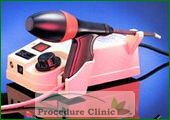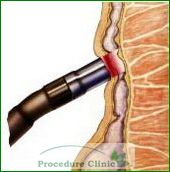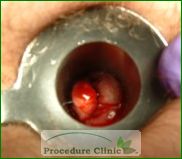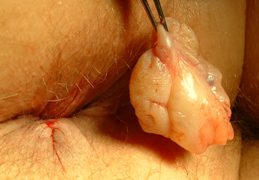Hemorrhoids Online Registration
For the complete information on hemorrhoids, please go to the website hemorrhoidheal.com.
 While many people associate hemorrhoids with painful surgery, only a small percentage of patients actually require surgery. A fast and simple office procedure has taken the fear out of hemorrhoid treatment. The majority of hemorrhoids patients are good candidates for non-surgical treatment, such as Infrared Coagulation (IRC) and banding.
While many people associate hemorrhoids with painful surgery, only a small percentage of patients actually require surgery. A fast and simple office procedure has taken the fear out of hemorrhoid treatment. The majority of hemorrhoids patients are good candidates for non-surgical treatment, such as Infrared Coagulation (IRC) and banding.
Why can’t Single Treatment Modality Fix All Hemorrhoids?
Hemorrhoids diseases include internal hemorrhoids, external hemorrhoids, anal tags, thrombosis of hemorrhoids and mixed hemorrhoids. Internal hemorrhoids are graded from I to IV based on the degree of prolapse. Besides causing anal itching, pain, bleeding and prolapse, hemorrhoids could cause other complications, such as thrombosis, anemia, and infection. Moreover, many hemorrhoid patients have a comorbidity of anal fissure, fistula, or anal warts. Because no single treatment modality can fix all hemorrhoids, a true hemorrhoid clinic will offer multiple treatment modalities and options to meet a patient’s needs and provide complete care.
If you are treated with single modality for your hemorrhoids, regardless of the severity, type of hemorrhoids, and associated anorectal conditions, it leads to poor results because of poor quality care.
No single treatment modality can fix all hemorrhoids or get rid of anorectal symptoms. Specialized hemorrhoid clinics should be able to offer multiple treatment modalities with cutting edge technologies to cure hemorrhoids and associated diseases.
Here are general guidelines for the hemorrhoid treatments based the types of hemorrhoids and the severity of hemorrhoids.
Internal hemorrhoid Grade 1
Very early hemorrhoids with minimal symptoms can often be effectively dealt with by dietary and lifestyle changes. The lifestyle changes should also be part of the treatment plan for more advanced hemorrhoids.
Internal hemorrhoid Grade 1-2
 No longer will you have to fear hemorrhoid treatment — Infrared Coagulation (IRC) of hemorrhoids is a fast and effective non-surgical solution. It is a safe, fast, and effective solution for hemorrhoids. It is approved by the FDA for the treatment of hemorrhoids. This office-based procedure takes just a few minutes and uses infrared light to treat symptomatic internal hemorrhoids. Therefore, IRC has quickly become the most widely used office procedure for hemorrhoids and is preferred over other methods because it is fast, effective, well-tolerated by patients, and rarely has complications.
No longer will you have to fear hemorrhoid treatment — Infrared Coagulation (IRC) of hemorrhoids is a fast and effective non-surgical solution. It is a safe, fast, and effective solution for hemorrhoids. It is approved by the FDA for the treatment of hemorrhoids. This office-based procedure takes just a few minutes and uses infrared light to treat symptomatic internal hemorrhoids. Therefore, IRC has quickly become the most widely used office procedure for hemorrhoids and is preferred over other methods because it is fast, effective, well-tolerated by patients, and rarely has complications.
A small light probe contacts the area above the hemorrhoid complex under direct view, exposing the tissue to a burst of infrared light for about one second. This coagulates the veins above the hemorrhoid, causing it to shrink.
By destroying these small veins with IRC, it stops the flow of blood to the varicose veins of hemorrhoids, just like blocking many small rivers will dry up a large lake.
With IRC, your doctor can effectively coagulate the insensitive area right above the hemorrhoids and destroy these small veins. In this way, the sensitive and painful area is avoided, and IRC becomes a very tolerable treatment.
 IRC offers major advantages to patients over previous hemorrhoid treatment methods:
IRC offers major advantages to patients over previous hemorrhoid treatment methods:
• Fast, simple, and safe solution
• No anesthesia required
• No special preparation needed
• No recovery time after treatment
• Clinically proven results
• Covered by all major insurance companies
Internal hemorrhoid Grade 3
Rubber Band Ligation(RBL) is one of the common procedures to treat hemorrhoids in in Minnesota. It is widely used for the treatment of more advanced (more prolapsed) internal hemorrhoids where the prolapsed hemorrhoidal tissue is pulled into a double-sleeved cylinder to allow the placement of rubber bands around the tissue. Over time, the ligated tissue dies off.
 RBL works very well for prolapsed hemorrhoids, such as the advanced grade 2 and grade 3 hemorrhoids. It cannot be performed if there is not enough tissue to pull into the barrel in the banding device. This procedure is almost never appropriate for grade 1 or mild grade 2 hemorrhoids (treated with IRC), or most severe (grade 4) hemorrhoids (treated with surgery).
RBL works very well for prolapsed hemorrhoids, such as the advanced grade 2 and grade 3 hemorrhoids. It cannot be performed if there is not enough tissue to pull into the barrel in the banding device. This procedure is almost never appropriate for grade 1 or mild grade 2 hemorrhoids (treated with IRC), or most severe (grade 4) hemorrhoids (treated with surgery).
The process involves a doctor inserting an anoscope into the anus and grasping the prolapsed hemorrhoid with a long clamp to place a rubber band around its base. Cutting off the blood flow to the hemorrhoid causing it to shrink and dies off within a week. The reduced volume of venous tissue with the scar formation prevents hemorrhoid tissue bulging into the anal canal. The procedure is done in a doctor’s office and only a couple of minutes. Treatment is usually limited to 1 hemorrhoid each office visit and additional areas may be treated at 2 week intervals. Most patients require two to four treatments. Rubber band ligation downgrades the hemorrhoids to grade 1 or 2, some patients may need to do IRC to treat the remaining hemorrhoids after Rubber band ligation.
Internal hemorrhoid Grade 4
The grade 4 internal hemorrhoid is the most severe type of hemorrhoids with persistent prolapse of hemorrhoid tissue, and it is often associated with external hemorrhoids. Therefore, the surgical excision to remove both internal and external hemorrhoids is necessary.
A Hemorrhoidectomy surgically removes the tissue that causes bleeding or protrusion. It is done in a doctor’s office, surgical center, or hospital under anesthesia and may require a period of inactivity.
The alternative option for conventional hemorrhoidectomy is PPH, stands for “Procedure for Prolapse and Hemorrhoids” or stapled hemorrhoidectomy. This procedure removes the loose tissue above the anus.
External hemorrhoidal tags (anal tags)
Small and asymptomatic tags don’t need any treatment. If symptomatic, anal tags can easily be Anal Tag Removalremoved in the office using a local anesthetic and a radiofrequency device.
Thrombosed external hemorrhoids
These hemorrhoids are typically treated with either incision to remove the clot or with external hemorrhoidectomy. Simply draining the clot usually relieves the pain immediately, but it may not work well if multiple thromboses exist as it can also lead to recurrence, so it is better for patients with multiple thromboses to completely excise the thrombosed hemorrhoids.
External hemorrhoids
 Small and asymptomatic external hemorrhoids don’t need any treatment, however most patients will have an intermittent flare up. Eventually patients may need surgery (external hemorrhoidectomy) if you have large external hemorrhoids and/or persistent symptomatic external hemorrhoids.
Small and asymptomatic external hemorrhoids don’t need any treatment, however most patients will have an intermittent flare up. Eventually patients may need surgery (external hemorrhoidectomy) if you have large external hemorrhoids and/or persistent symptomatic external hemorrhoids.



